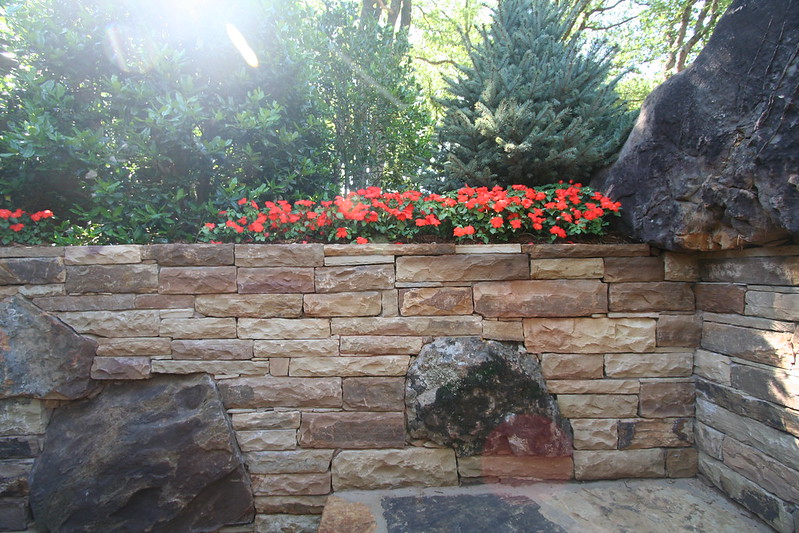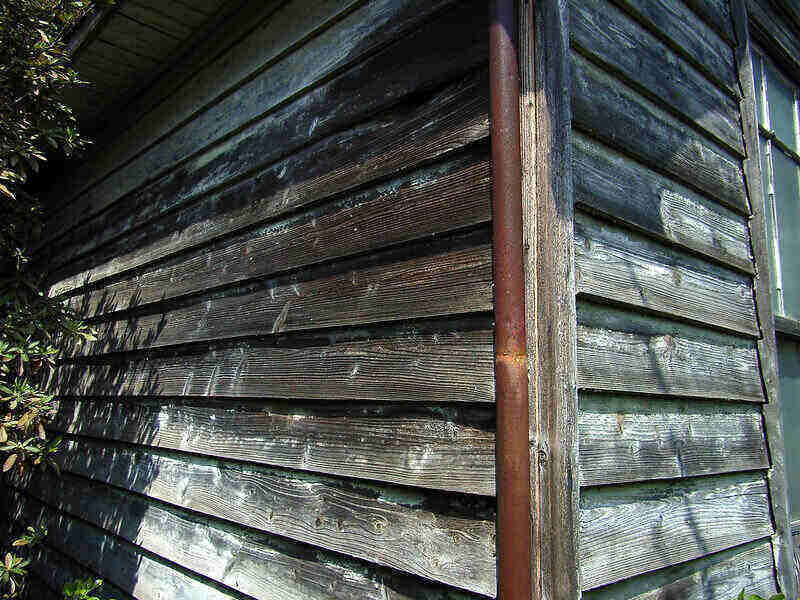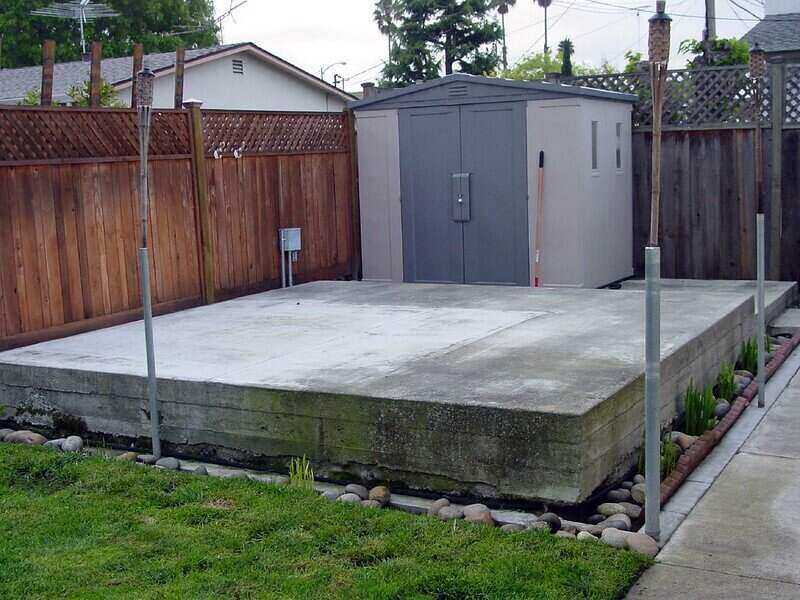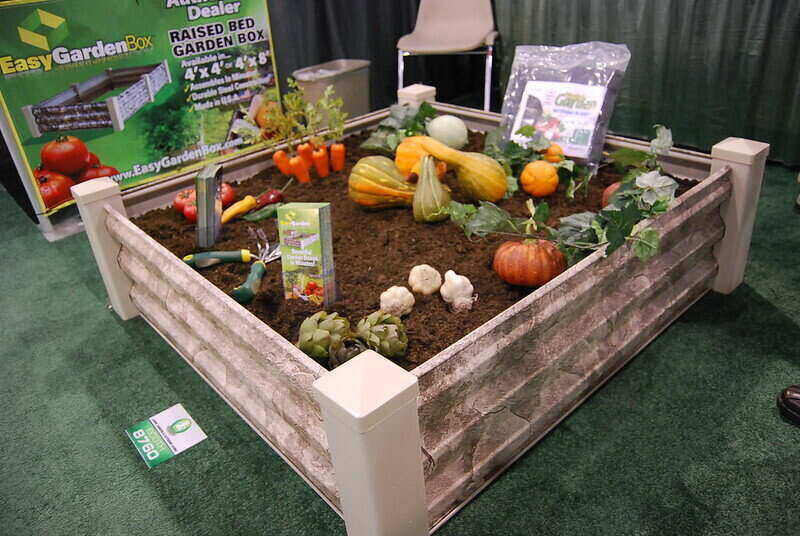Pea gravel is a popular hardscaping material suited for walkways, driveways, patios, landscape beds, playgrounds, and other landscape features. If you are contemplating a new project, you might wonder, “How much does pea gravel cost?” You can expect to pay about $25 to $53 per ton, with an average cost of $39 per ton.
For smaller projects, you would pay $25 to $67 per cubic yard or $46 per cubic yard on average. Small 0.5-cubic-foot bags of pea gravel are a little more accessible than larger quantities, and you can buy them from hardware stores and big-box home centers like Lowe’s and Home Depot for about $4 to $7 per bag.
If you plan to install your own pea pebbles (as most homeowners do), you would pay about $310 total for the gravel necessary to cover 200 square feet, the typical size of a residential project. For professional installation, you’ll have to add another $14 to $69 per hour of work.
On This Cost Guide:
- How Much Does Pea Gravel Cost?
- Cost Estimator by Project Size
- Other Factors That Affect Cost
- Cost of Installing Pea Gravel
- DIY Cost vs. Professional Installation Cost
- Cost of Pea Gravel by Location
- FAQ About Pea Gravel
How Much Does Pea Gravel Cost in 2025?
- Typical price range per 0.5-cubic-foot bag: $4 – $7
- Typical price range per ton: $25 – $53
- Typical price range per cubic yard: $25 – $67
- National average cost for 200 square feet of coverage: $310
- Added cost of professional installation: $14 – $69 per hour
It is cheaper to buy pea gravel by the ton. You would pay about $25 to $53 for a one-ton load of pea gravel — although you may have a hard time transporting that much.
For most residential projects, you are more apt to buy pea gravel by the yard, which costs about $25 to $67 per yard. For an especially small project, such as a single plant bed, you might only need a few small bags of pea gravel for $4 to $7 apiece.
Most pea gravel driveway or patio projects for an average-sized home would require about 200 square feet of coverage. Overall, the pea gravel on its own would cost about $310 on average for a DIY project of this size.
Even though pea gravel should be easy enough for you to install, you may choose to hire a professional landscaper to do the job for $14 to $69 per hour.
Cost Estimator by Project Size
Calculate how much pea gravel you need to purchase based on the type of hardscaping/landscaping feature you want to install (driveway, patio, walkway, flower bed). Different projects will cover more or less ground and require various depths of pea gravel, and those dimensions will determine how much you spend on the gravel.
For example, a basic walkway won’t have to bear a lot of weight, so you would need a layer of pea gravel only about 2 inches deep. On the other hand, a driveway has to hold up under the weight of one or more cars, and a patio usually supports furniture and maybe even a grill, so these projects need a thicker layer of about 6 inches deep of pea gravel.
If you want to use pea gravel as mulch in a flower bed to smother weeds and help plants’ roots retain moisture, you would need at least 3 inches of pea gravel. You also can use pea gravel to cushion falls and encourage better drainage in a children’s play area, using a layer of about 4 inches.
We’ve calculated the approximate overall cost of the most common pea gravel projects using these recommended depths and the typical size of each project for a residential property.
| Pea Gravel Project | Project Size | Cubic Yards | Pea Gravel Cost |
| Walkway 2 inches depth | 4 x 35 feet | 1 | $46 |
| Driveway 6 inches depth | 24 x 20 feet | 9 | $414 |
| Playground 4 inches depth | 25 x 15 feet | 5 | $230 |
| Patio 6 inches depth | 10 x 10 feet | 2 | $92 |
| Landscape bed 3 inches depth | 4 x 8 feet | 0.5 | $23 |
How Much Pea Gravel Do I Need?
Here is the method you can use to determine how much pea gravel each project will take and how much money you will spend on it.
- How much pea gravel per square foot do I need? We know that 1 cubic yard of pea gravel covers about 324 square feet at a depth of 1 inch. Divide that 324 by your desired depth of gravel in inches to figure out how many square feet you can cover with 1 cubic yard of pea gravel for your project.
Example: 324 ÷ 6 inches = 54, so you would cover an area of 54 square feet with 1 cubic yard of pea gravel if your project requires a 6-inch layer of pea gravel.
- Measure the size of your pea gravel project in square feet and divide that number by the answer to the previous step to calculate how many cubic yards of pea gravel you need for the project.
Example: 480 square feet ÷ 54 square feet = approximately 9 cubic yards of pea gravel
- Multiply the cubic yards needed (the answer to the last step) by 46, since the national average pea gravel price is $46 per cubic yard.
Example: 9 cubic yards × $46 = $414 total
Other Factors That Affect Cost
How much pea gravel you have to buy is the biggest factor influencing the price of your project. That being said, there are other project specifics, such as the type of pea gravel and where you buy it from, that can rack up costs significantly.
Don’t let surprise costs sneak up on you, and don’t miss out on tactics that could help you save money. Keep factors like these in mind if you want to calculate an accurate budget.
Buying in Bulk
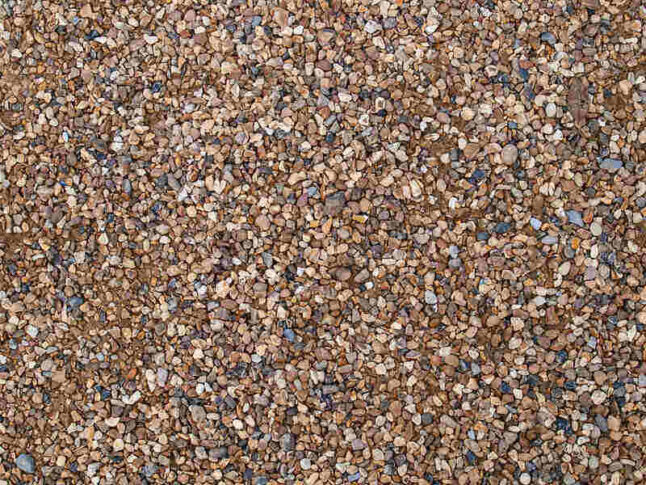
Buying a large amount of pea gravel (like by the ton instead of the cubic yard or bag) can result in a lower per-unit cost. You might consider buying more than you need to save money, then find something else to do with the extra or dispose of it.
For this reason, pea gravel is an excellent choice for large projects, like a long driveway for several cars or a private road, that require multiple tons of material.
From most stone suppliers, you can buy pea gravel by the truckload, the ton, the cubic yard, or small bags of 0.5 cubic feet. The more you buy, the less you pay per unit.
| Amount of Pea Gravel | Total Cost | Relative Cost |
| 0.5 cubic feet | $4 – $7 | $$$$ |
| Cubic yard | $25 – $67 | $$$ |
| Ton | $25 – $53 | $$ |
| Truckload (2.5 to 22.5 tons) | $62.50 – $1,192.50 | $ |
Delivery Fees
Depending on where you buy from, delivery costs could be as high or even higher than the pea gravel itself. If you’re buying in bulk, though, transportation can be a challenge, so you’ll probably want to opt for delivery despite the extra cost.
Some landscape suppliers or stone yards may require a minimum order to offer delivery. That minimum can range from as small as a cubic yard to multiple tons of pea gravel. When you contact your supplier for a project quote, ask about their delivery policy.
You may even be able to get free delivery if you live within a certain radius of a quarry or stone yard, so you’re better off purchasing from a nearby source.
Outside that radius, you should expect to pay about $10 to $25 per ton or $5 to $10 per mile for delivery. Add that cost to the material cost of your pea gravel.
Color
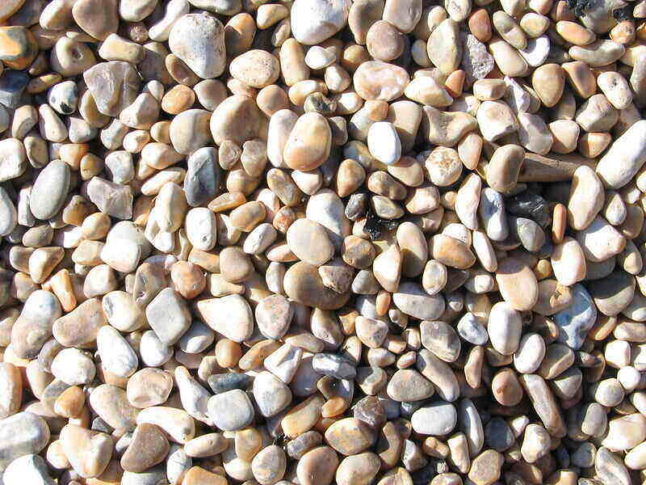
Standard pea gravel, the kind we’ve been using in our pricing so far, comes in different shades of gray. You can also find more interesting varieties in earthen tones like brown, tan, and white or even flashier colors like red or blue to add a pop of color to your landscape.
For colored pea gravel, expect to add $20 to $50 per cubic yard or ton to your overall cost. If buying in small amounts, the cost for colored pea gravel will be about $8 per bag of 0.5 cubic feet.
Texture
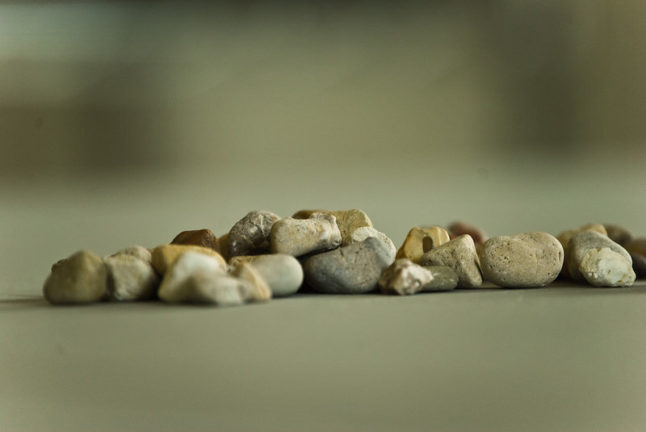
Soft, smooth types of pea gravel are best for children’s playgrounds, walkways, patios, or other areas with heavy foot traffic where you may walk barefoot or where someone is more likely to fall.
That softer gravel will usually cost more than rougher types without defined shapes. Rough pea gravel, the more affordable option, works for projects like driveways or landscape beds where you don’t have to worry as much about someone getting hurt.
Borders
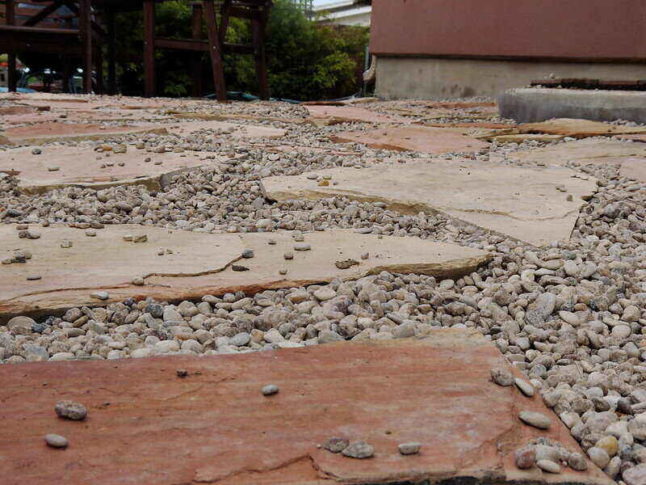
Because pea gravel is a loose material, you’ll need to install some kind of landscape edging or border all around the area to keep it contained. How much the border adds to your project cost depends on the border material.
Simple no-dig plastic landscape edging is the cheapest option, while natural stone pavers like limestone are the most expensive.
Cost of Installing Pea Gravel
Installing pea gravel is an easy DIY project as far as hardscaping goes. This job will be much simpler than pouring concrete or laying pavers. The hardest part will be transporting the heavy gravel, especially in large quantities. That’s why delivery is such a popular option.
Remember that the cost of installing pea gravel includes more than just the pea gravel. You may have to buy tools and other materials for installation.
Equipment Needed
Buying all the tools you need to install pea gravel could make this DIY project cost as much or even more than a professionally installed driveway, walkway, or patio.
All the necessary tools are fairly commonplace, though, so you’ll most likely be able to use them again in the future — and you might even have them in your garage or tool shed already. If not, here’s an estimate of how much you would pay for new tools, based on average prices from Amazon, Lowe’s, and Home Depot.
| Equipment Needed | Average Cost |
| Work gloves | $10 |
| Protective safety glasses | $16 |
| Tape measure | $18 |
| Hammer | $20 |
| Level | $21 |
| Square point shovel / transfer shovel | $33 |
| Garden hose and nozzle | $42 |
| Landscape rake | $48 |
| Tamper | $62 |
| Wheelbarrow | $154 |
| TOTAL | $424 |
Cost of Additional Materials
Other than the pea gravel itself, you’ll need additional materials to complete this project, including crushed rock for a base, landscape edging, landscape fabric to block weeds, and staples to secure the fabric.
We’ve already covered the cost of pea gravel in-depth, so now we’ll go over the approximate price of the other necessary materials. Our pricing data comes from Amazon, Lowe’s, and Home Depot’s websites.
For our purposes, we calculated how much material you would need for a project of 200 square feet (a typical size for most residential projects). That includes enough landscape fabric to cover an area of 10 feet by 20 feet and about 1.23 cubic yards or 2,952 pounds of base rock.
| Additional Materials | Average Cost |
| Landscape staples (for fabric) | $10 |
| Landscape fabric | $39 |
| No-dig plastic landscape edging | $50 |
| Crushed rock for base | $370 |
| TOTAL: | $469 |
How to Install Pea Gravel DIY in 7 Steps
1. Outline the space. Use your garden hose to lay out the shape of your pea gravel patio, walkway, play area, or other landscape/hardscape features. Make sure you give enough space for any furniture or play equipment, plus enough room to move around.
2. Dig out the area. Before starting your project, call 811 (the diggers’ hotline) to find out where your underground utilities are buried so you can avoid them while you dig. Dig out the whole area where you’ll be laying pea gravel to an appropriate depth for your project.
Use a square point shovel, aka transfer shovel, so you can make clean edges and level the ground. Remove weeds, rocks, and any other obstructions from the dirt before you begin installation.
3. Tamp and level the base. The floor of the space you dug out should be level throughout. Tamp the dirt down with a hand tamper, or you can rent a plate compactor for an especially large area.
4. Install border. Before laying the base, install a landscape border around the perimeter of the whole area. Plastic landscape edging is an affordable and easy-to-install option, or you could use stone, wood, or another aesthetically pleasing edging material.
5. Prepare the base. Spread out about a 2-inch layer of crushed rock (decomposed granite or something similar) to create a stable base for the pea gravel. Use a landscape rake to spread the material evenly. Spray water over the base rock and tamp it with the hand tamper or plate compactor. Make sure the whole layer is level when you’re done.
6. Install landscape fabric. On top of the base rock layer, install landscape fabric and trim it to fit within the border. Secure the edges and seams of the fabric with landscape staples. This layer will prevent weeds from breaking through and keep the pea gravel from sinking into the dirt.
7. Lay pea gravel. At an appropriate depth for your project (check the recommended depths mentioned earlier in this guide), spread out an even layer of pea gravel within the border you installed earlier. The border should rise at least a half-inch taller than the gravel to keep the stones in place. You may need to tamp down the gravel layer.
DIY Cost vs. Professional Installation Cost
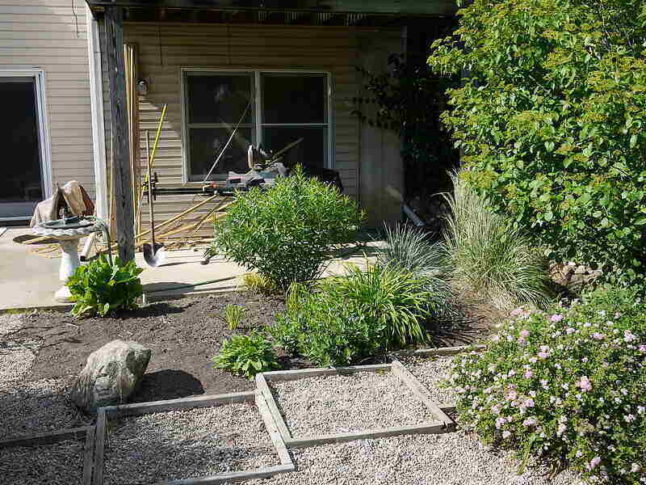
Remember that the pea gravel it takes to cover 200 square feet would cost about $310 on average (though that number could change significantly based on the depth of gravel your project needs).
With the necessary equipment and additional materials, you would spend about $1,203 to install your own pea gravel project of this size. That number seems high, but keep in mind that it includes tools you can use for other home improvement projects.
For professional installation, you would still have to pay for all the same materials (though not the equipment). You’ll also have to factor in labor costs, which range from $14 to $69 per hour. Assuming you pay the average rate of $42 per hour and the job takes 4 hours to complete, the total cost of having the same-sized project professionally installed is $905.
If you don’t already own the tools needed for this project, you could actually save money by hiring a professional landscaper to install your pea gravel feature instead of doing it yourself.
Cost of Pea Gravel by Location
When shopping for pea gravel, you’ll want to buy from the closest source possible. Transporting large amounts of pea gravel between different cities can get really expensive because of delivery fees.
Different types of gravel might vary in price depending on the region where you live, too. Some stone is more common in certain parts of the country and will cost less in those areas than in places where it needs to be shipped a long distance.
FAQ About Pea Gravel
1. What are the Advantages of Pea Gravel?
Pea gravel is an affordable, low-maintenance material that’s easier to install than most other hardscape options. Pea gravel can serve several different purposes in the landscape, from mulch in garden beds to the surface of a driveway.
2. Will Pea Gravel Wash Away?
Installing a border around your pea gravel should keep it from washing away. If the area regularly floods by several inches or more, the gravel may wash away over the top of the edging material.
3. How Do You Keep Pea Gravel Clean?
You should rake through your pea gravel regularly to remove twigs, leaves, litter, and other debris that the elements might mix in over time.
4. How Much is a Yard of Pea Gravel?
The pea gravel cost per yard is $25 to $67. Although it is often cheaper to buy pea gravel by the ton, purchasing it by the yard may be easier and more convenient, especially for smaller projects. Buying by the yard can help you better estimate the amount you need without ending up with a lot of excess material.
Conclusion
Pea gravel is a great option for walkways, patios, driveways, playgrounds, and other residential landscape features. It’s easy to install and much cheaper than most other hardscape materials. You can expect to pay $25 to $53 per ton, $25 to $67 per cubic yard, or $4 to $7 per bag for plain pea gravel.
Colored or otherwise specialty pea gravel could cost an additional $20 to $50 per ton or cubic yard. Delivery fees or professional installation could also add to your overall costs, but buying in bulk could result in savings.
If you don’t want to go through the trouble of installing pea gravel yourself or simply want the peace of mind to sit back and relax while the job gets done, you can contact the top-rated landscape professionals in your area. They will handle all the hard work for you and ensure everything is done to the highest standard.
Note: LawnStarter may get a referral fee for matching you with contractors in your area.
Main Photo Credit: F. D. Richards / Flickr / CC BY-SA 2.0
